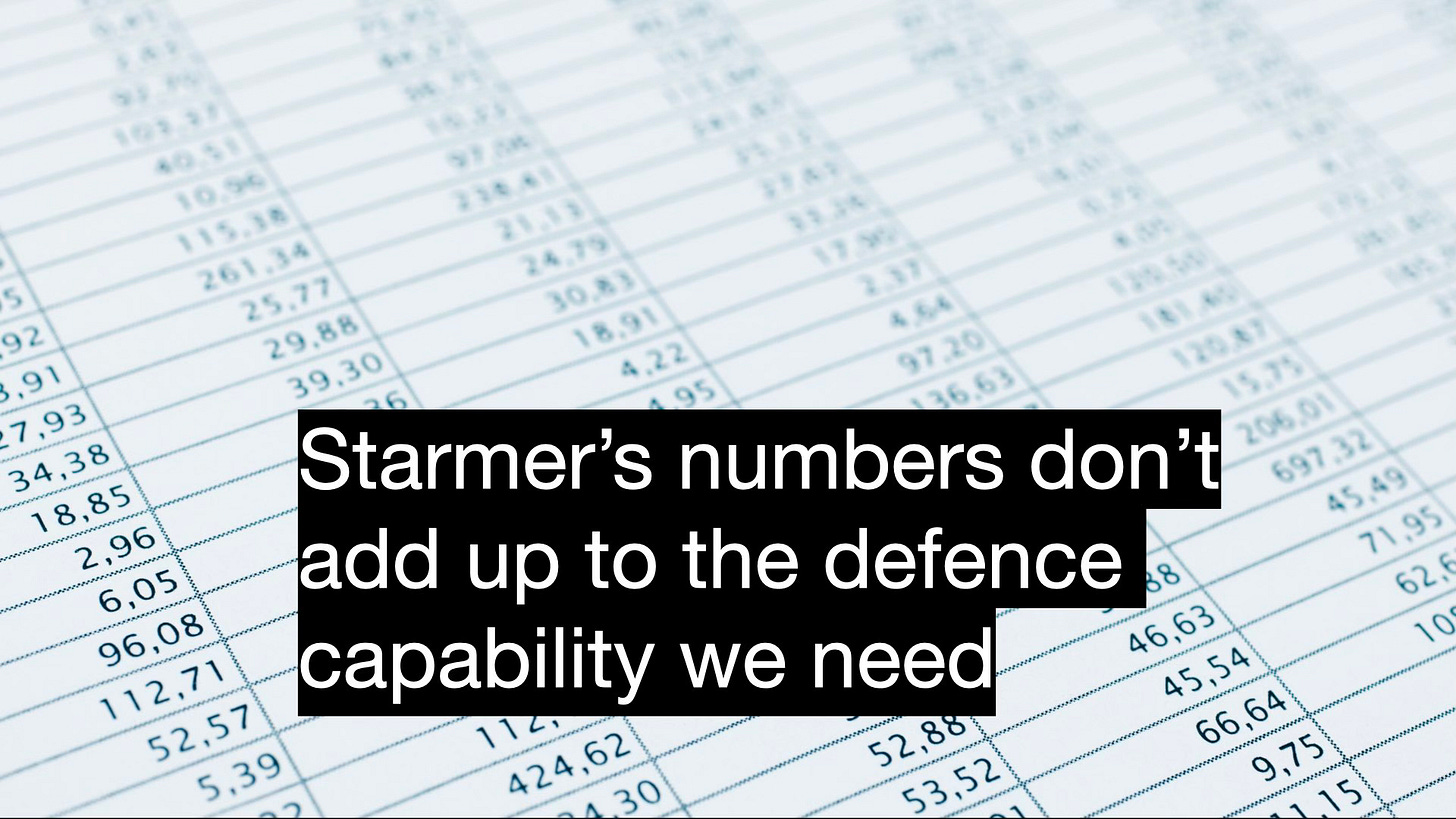The Empty Promise of Defence Spending
Behind the numbers games that weaken Britain's military might
The recent announcement of increased UK defence spending might seem like a robust commitment to national security, but a closer look reveals how spending targets can actually undermine military effectiveness.
As Tom Jones writes in The Critic, Labour's promise to raise defence spending to 3 percent of GDP by the next Parliament includes some creative accounting. Intelligence and security service spending will now be counted within the defence budget, and there are questions about whether the Chagos deal will be funded from these supposedly increased resources.
This highlights a fundamental problem with NATO's 2 percent GDP spending target. As The Critic notes, this target is "entirely arbitrary" and "isn't derived from any evidence-based policy making." Instead, it's merely "a politically convenient round number chosen for its simplicity rather than its relevance."
The consequences of this target-driven approach are already visible. Labour has recently cut £500 million from the defence budget by scrapping vital military assets, including HMS Bulwark and Albion - leaving Britain without amphibious capability - while also reducing funding for the next-generation Tempest fighter programme by £160 million. The proposed spending increase might simply be filling holes created by recent cuts.
As management consultant Peter Drucker observed, "what gets measured gets managed - even when it's pointless to measure and manage it, and even if it harms the purpose of the organization to do so." This perfectly encapsulates the current approach to defence spending, where meeting percentage targets takes precedence over actual military capability.
What Britain needs isn't arbitrary spending targets, but a clear-eyed assessment of our military requirements and the commitment to fund them properly. After all, having a larger defence budget means little if we're spending it on accounting tricks rather than actual defence capabilities.


